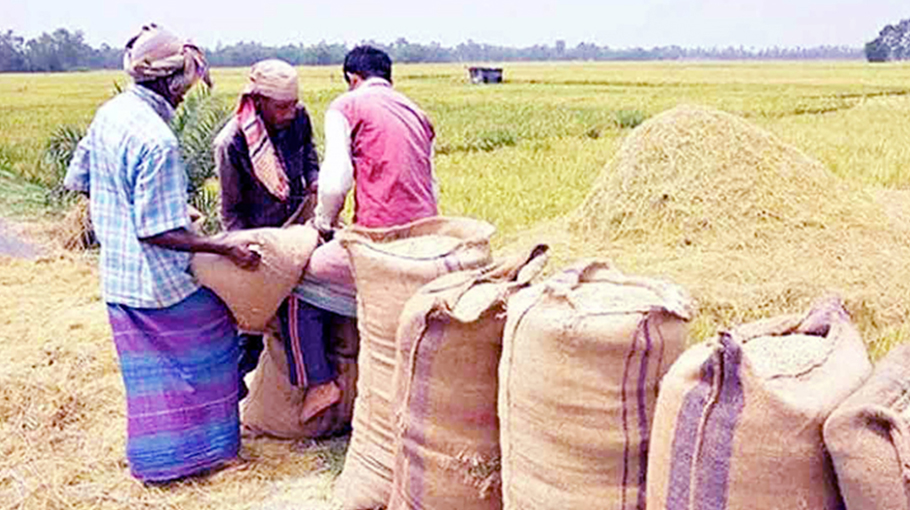Aman yield Bumper but lower price for Bogura farmers

Aman's highly anticipated golden rice harvest has hit the shelves in Bogura but instead of jubilation, farmers are grappling with the low market prices of their produce.
The latest reports from various markets, including Durgapur, Deogram, Jamgram, and Aeroil Bazar, reveal that Aman paddy is being traded at a meager Tk 1100-1150 per maund. Even aromatic kataribhog varieties only Tk 1300-1400 per maund, much to the disappointment of the agricultural community.
Rising production costs, attributed to increased fertilizer prices and other agricultural inputs, have exacerbated the situation. Labor costs have also surged, rendering it challenging for farmers to cover essential family expenses, including the costs of cultivation.
During the current Aman season, the government set the price of paddy at Tk 30 per kg, translating to Tk 1200 per maund. However, the market reality paints a different picture, leaving farmers grappling with dissatisfaction and financial strain.
At the Bibirpukur market in Kahalur, the largest wholesale paddy market in Uttaranchal, early-ripened colored rice is being peddled at Tk 1100-1150 per maund, and fragrant Katari Bhog at Tk 1300-1400 per maund. While the government has announced direct purchase from farmers at Tk 30 per kg for paddy and Tk 42 per kg for rice during the Aman season, market prices currently hover Tk 100 below the government-fixed rates.
Compounding the issue, local mill owners are refraining from purchasing paddy due to a slight decrease in imports, allowing opportunistic intermediaries to capitalize on the situation.
Farmers, such as Ismail from Paikar Union and Ibrahim Ali from Birkedar Union, express discontent despite a favorable Aman rice yield this season. Although the yield per bigha has reached an impressive 16-18 maunds, low market prices undermine the farmers' efforts. The discrepancy between production costs and market prices has resulted in profits slipping into the pockets of middlemen, leaving the farmers in a precarious financial position.
The concerns of the farming community extend beyond the market dynamics, encompassing the broader economic landscape. The simultaneous surge in everyday product prices adds to the farmers' woes, intensifying the struggle to meet household expenses. Even with the anticipation of a bumper Aman rice yield, farmers find themselves caught in a web of financial uncertainty, unable to recover production costs amidst escalating fertilizer prices.
Jannatul Ferdous, Upazila Agriculture Officer, optimistically anticipates a robust Aman rice yield in the current season.
As per Agriculture Office sources, 18,250 hectares of land in 9 unions and 1 municipal meeting of the upazila have been dedicated to Aman paddy cultivation. Of this, 17,880 hectares feature high-yielding Ufsi and hybrid rice on residual land, with a production target set at 9,645 MT. The success of this endeavor, however, hinges on addressing the critical issue of fair and sustainable pricing, ensuring the prosperity of the backbone of our agricultural sector - the hardworking farmers.




